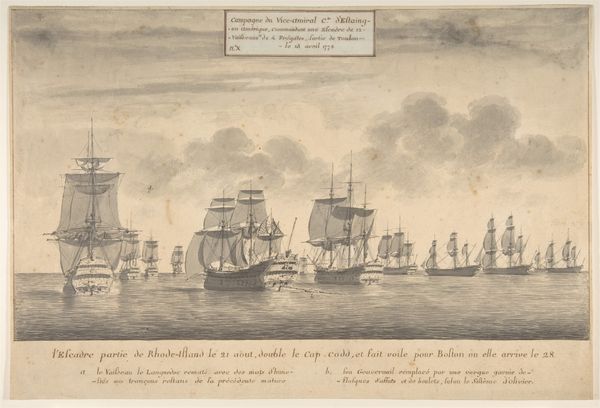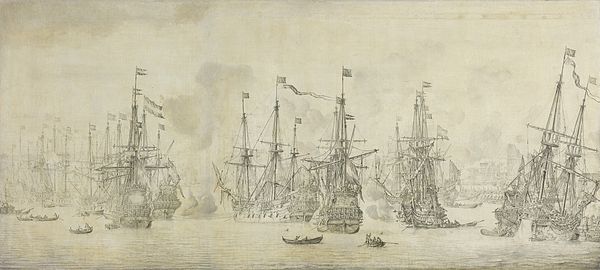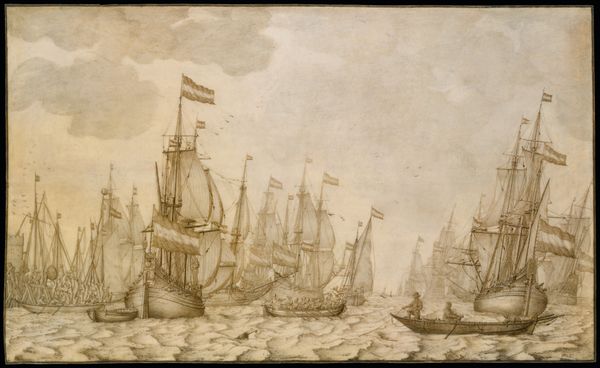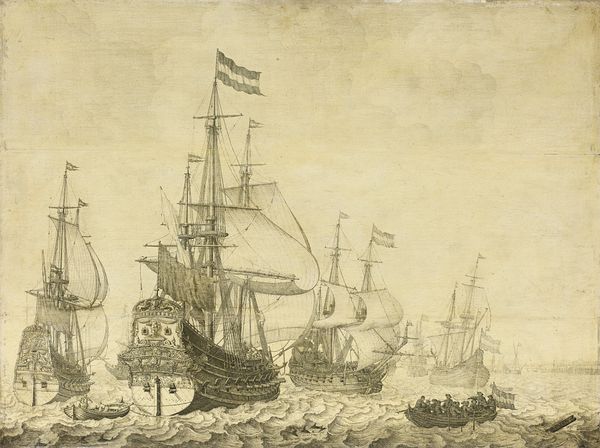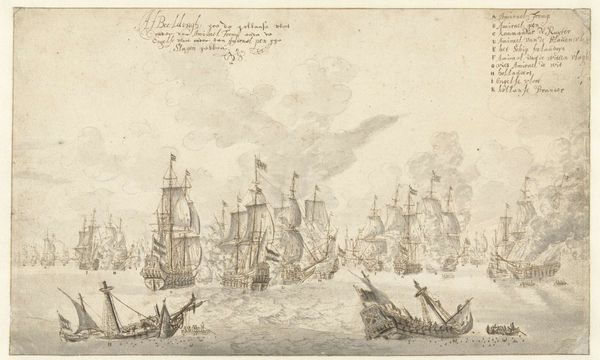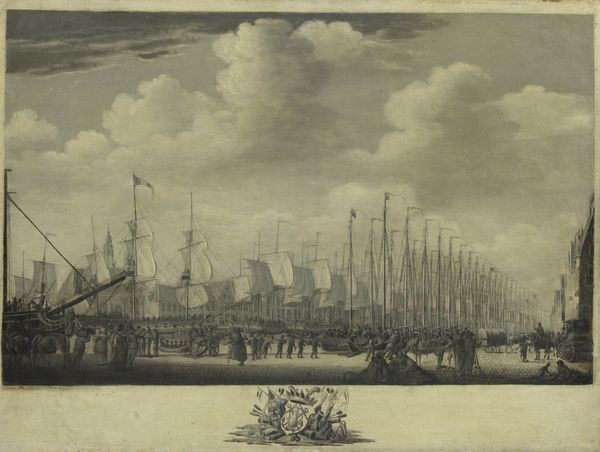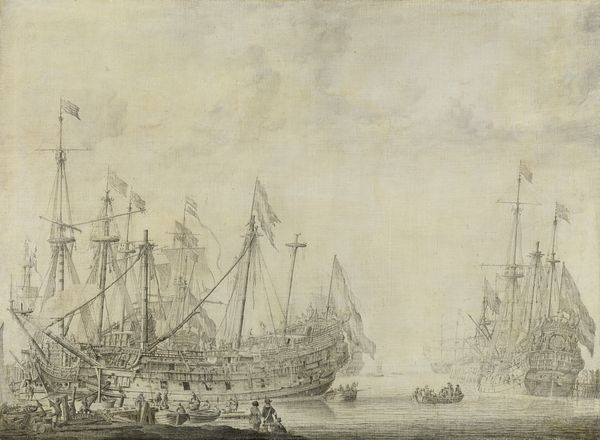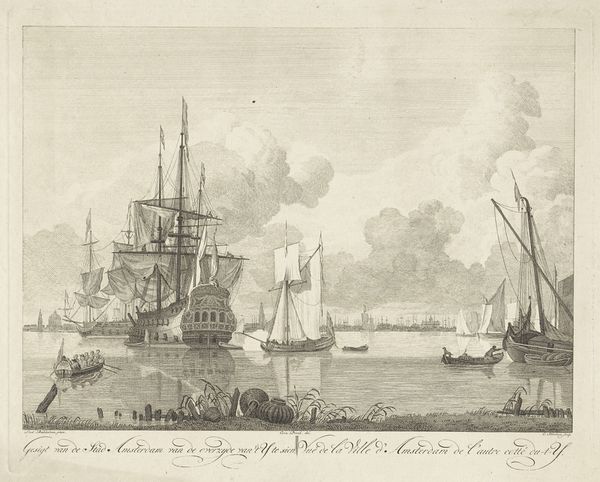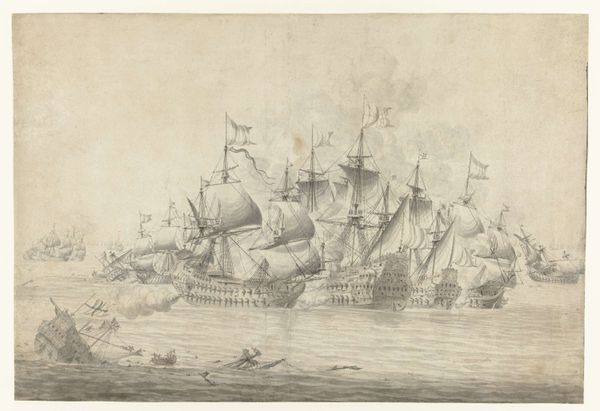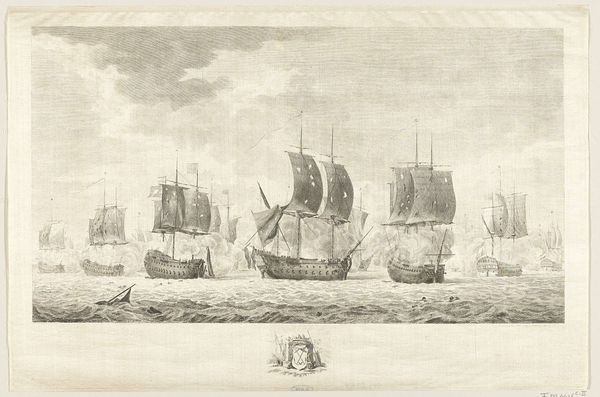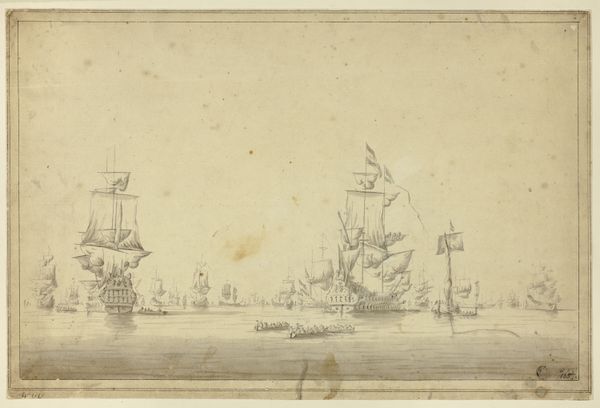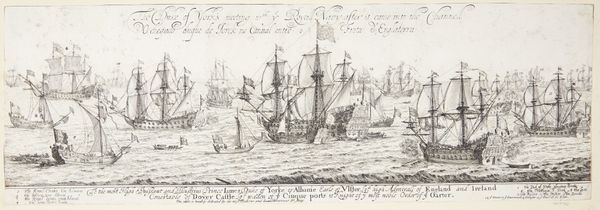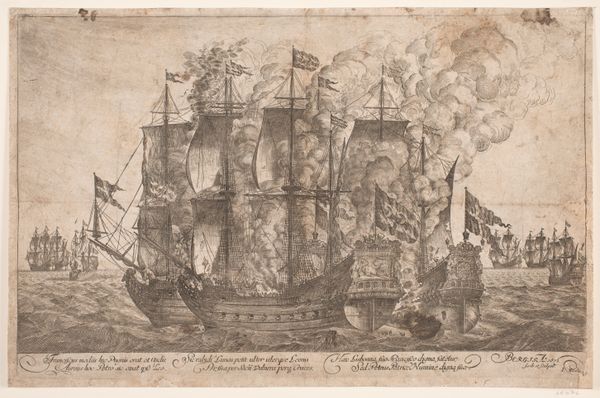
"Council of War aboard ""The Seven Provinces"", the Flagship of Michiel Adriaensz de Ruyter, 10 June 1666, preceding the Four Days' Battle: episode from the Second Anglo-Dutch War" 1666 - 1693
0:00
0:00
willemvandeveldei
Rijksmuseum
drawing, print, etching, paper, ink
#
drawing
#
baroque
# print
#
etching
#
landscape
#
paper
#
ink
#
genre-painting
#
history-painting
Dimensions: height 117.0 cm, width 175.0 cm, depth 8.5 cm
Copyright: Rijks Museum: Open Domain
Editor: Here we have "Council of War aboard "The Seven Provinces", the Flagship of Michiel Adriaensz de Ruyter, 10 June 1666, preceding the Four Days' Battle: episode from the Second Anglo-Dutch War", an etching by Willem van de Velde the Elder, dating from between 1666 and 1693. It's currently held at the Rijksmuseum. What strikes me immediately is the artist’s capacity for meticulous detail given the scale of the scene. I’m curious, what visual aspects stand out to you in this work? Curator: The engraving immediately showcases a highly organized and rigorous depiction of maritime elements. Notice the articulation of line, its sheer precision which delimits the composition. Observe the careful delineation between the textures: the taut sails versus the roiling sea, achieved through sophisticated deployment of hatching and cross-hatching. This technique, intrinsic to printmaking, generates a compelling visual dichotomy within the artwork. Do you note how van de Velde uses tonal gradations to generate a three-dimensional effect? Editor: I do see how the density of lines varies to create depth and shadow. But does this formalist approach perhaps neglect the narrative, the depiction of the war council itself? Isn’t the subject matter important? Curator: Subject matter exists of course, yet formalism prioritizes *how* that subject is rendered visible. Ask yourself about the artist’s choices regarding composition: the placement of the flagship, the arrangement of the figures… These are formal decisions contributing to the viewer’s experience. Further consideration ought to be given to how the materiality and the monochromatic palette accentuate these formal choices. Editor: So, by focusing on these elements like line, tone, and composition, we can grasp the artist’s intention more clearly, even beyond the historical narrative. That’s fascinating, and a good reminder to examine those building blocks in any work we encounter. Curator: Precisely. Approaching art through its inherent structure often provides a new vantage for experiencing the image.
Comments
No comments
Be the first to comment and join the conversation on the ultimate creative platform.

